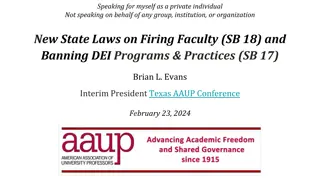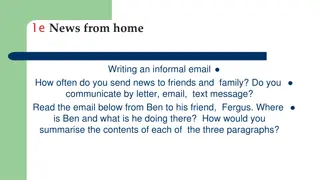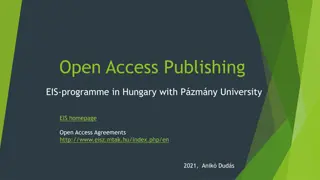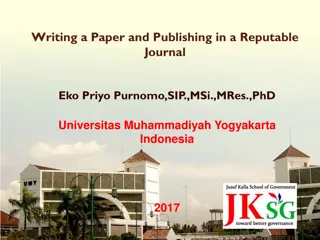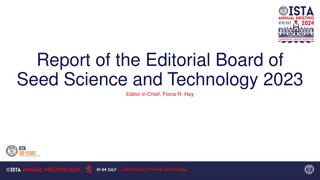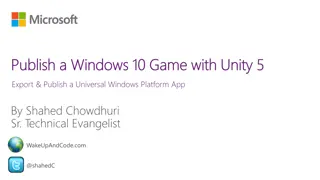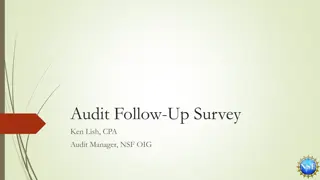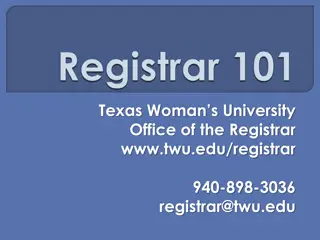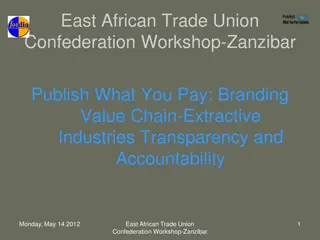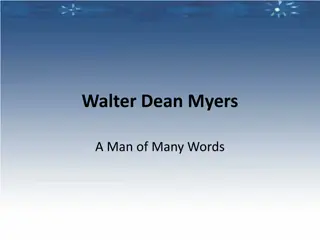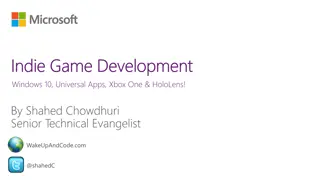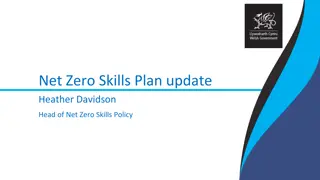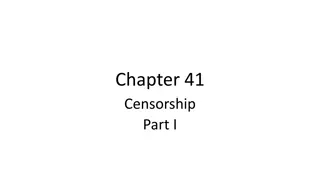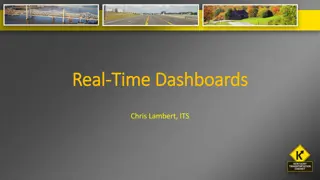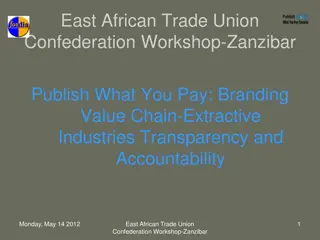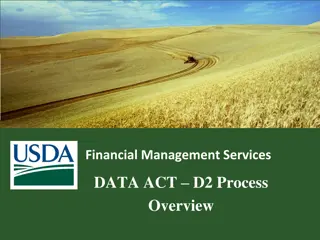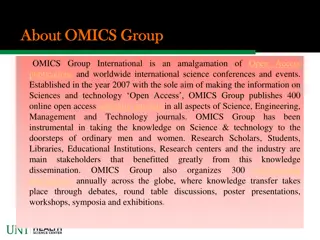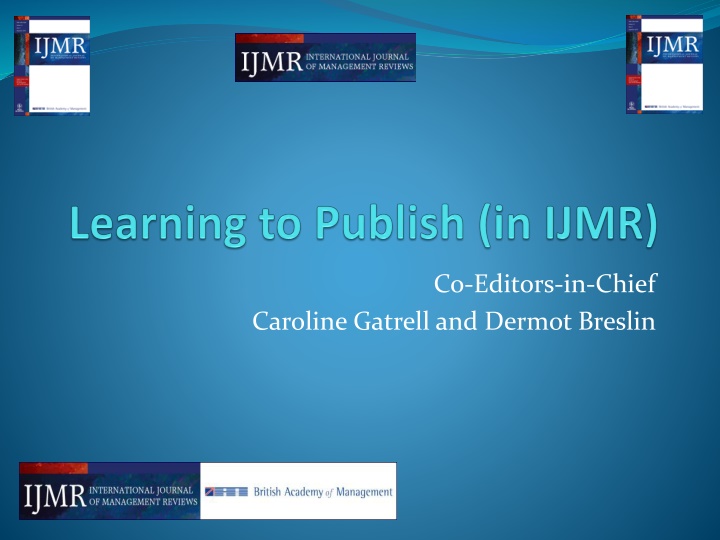
Insights into International Journal of Management Reviews
Explore the world of the International Journal of Management Reviews (IJMR), covering its history, impact factors, global readership, special issues, aims and scope, and peer review process. Discover how IJMR seeks to shape new directions in research and contribute significant conceptual insights to the field of management studies.
Download Presentation

Please find below an Image/Link to download the presentation.
The content on the website is provided AS IS for your information and personal use only. It may not be sold, licensed, or shared on other websites without obtaining consent from the author. If you encounter any issues during the download, it is possible that the publisher has removed the file from their server.
You are allowed to download the files provided on this website for personal or commercial use, subject to the condition that they are used lawfully. All files are the property of their respective owners.
The content on the website is provided AS IS for your information and personal use only. It may not be sold, licensed, or shared on other websites without obtaining consent from the author.
E N D
Presentation Transcript
Co-Editors-in-Chief Caroline Gatrell and Dermot Breslin
Learning to Publish in IJMR Overview of the Journal Making a Conceptual Contribution Negotiating the Peer Review Process Reviewing Review Papers
IJMR: History and Impact Launched in 1999 Four issues per year (Jan, Apr, Jul and Oct) Latest 2-year Impact Factor: 5.578 ISI Rankings 2016: 8/121 Business, 10/194 Management Latest 5-year Impact Factor: 7.731
IJMR: Global Readership Articles published on Early View approximately 2 months after acceptance: http://onlinelibrary.wiley.c om/journal/10.1111/(ISSN)1 468-2370/earlyview During 2016 IJMR articles were downloaded a total of 245,809 times Click on Get New Content Alerts to keep up-to-date 2016 Downloads
IJMR: Special Issues Upcoming: 2019 - Paradoxes 2018 - Towards a Theoretical Foundation for Performance Measurement and Management Recently published: 2018 - Organizational Goals: Antecedents, Formation Processes, and Implications for Firm Behavior 2017 - Exploring the Registers of Identity Research 2016 - The Translation of Management Knowledge: Challenges, Contributions and New Directions
Aims and scope, IJMR Papers published in IJMR seek to make significant conceptual contributions Present a strategic platform for new directions in research and making a difference to how OMS scholars might conceptualise research in their respective fields. Critically evaluate the state of knowledge in a given field, and critically appraise conceptual underpinnings of competing paradigms with a view to advancing current and future research in the area.
Peer Review Process Managing Editor Production Editor-in-Chief 2 Editor-in-Chief 1 Author 2 Author 3 Author 1 Associate Editor 7 Associate Editor 8 Associate Editor 5 Reviewer 3 Associate Editor 3 Associate Editor 6 Associate Editor 2 Associate Editor 1 Reviewer 2 Associate Editor 4 Reviewer 1
Getting past the IJMR EICs desk IJMR welcomes submissions that seek to challenge and shift paradigms in a manner which is both engaging and convincing. Offer a clear statement about what contribution the review makes to theory and future research agenda. Show clearly how the paper differentiates itself from others on similar topics previously published in IJMR Offer reasoned and authoritative arguments about where the literature is now and where it should be going. What important questions, or gaps, still exist in the field?
Making a Conceptual Contribution What is the problem? Why is this important? What is your solution? Why is this a good solution?
Miners and Prospectors Contribution that fills gaps in an existing knowledge domain Contribution that look to shape the direction of research or search for new knowledge domains
The Miners Path Choose a mine Choose a position in the mine Fit into the work of your colleagues Choose your tools Carve out your contribution
The Miners Path See how your contribution fits with others Incremental steps towards the bigger picture
Incremental Contributions Put boundaries on research domains Stay within a discipline Researcher s interpretation of management knowledge Anything new to practice? Critiqued as a Silo approach
The Prospectors Calling While some opportunities are of the low-hanging fruit variety, others call for creative and courageous efforts to explore topics of unknown variety with a substantial risk of dead ends and empty hands but with potential to rejuvenate and enlighten the entire landscape. Without discovery driven explorations, research will likely increasingly travel on narrow roads that can suffocate further social traffic on imprinting (Simsek et al., Journal of Management, 2015).
The Prospectors Calling Take a gamble Look at the big picture Search for less trodden paths
Breakthrough Contributions Broader perspective Not constrained by disciplinary boundaries Reflection of what research to date has to offer Generalised as opposed to silo approach Higher risk Crossing established boundaries
Examples from IJMR 2016-17 Linnenlueke (2017): Theoretical underpinnings, conceptual themes Bailey et al. (2017): Theory frameworks (antecedents and outcomes) Savino et al. (2017): Conceptual organizational (levels) Anderson & Sun (2017): Exploring different paradigms, integrating across paradigms Pillai et al. (2016): Exploring generative mechanisms, tying themes together, unifying account Andersen et al. (2016): Examining different approaches to a core concept Lopez Duarte et al. (2016): Exploring role of key concept in domain of knowledge Saggese et al. (2016): Exploring intellectual structure of a developing field Gond et al. (2016): Foundational perspectives, different mobilizations of a concept, highlighting uses and abuses, developing taxonomy Lahiri (2016): Examining a phenomena through different lenses Van Grinsven et al. (2016): Interpretations of a core concept, developing typology to illuminate fragemented literature, underlying theoretical perspectives Rolik (2016): Elaborating a theoretical construct
Examples from IJMR 2016-17 Waeraas & Nielsen (2016): comparing theoretical perspectives, cross-fertilization and enriching each area, developing common language Manroop & Richardson (2016): Exploring interdependence of approaches, developing integrative model Hutzschenreuter et al. (2016): Exploring core concept/construct at different theoretical levels Adams et al. (2016): Process interpretation of a field, building blocks of theory, developing framework/model Kim & Aguilera (2016): Theoretical traditions in historical development of a field Sminia (2016): Exploring theoretical dimensions in the development of a field O Mahoney (2016): Explaining differences through archetypes and principles, unpacking philosophical assumptions Lamb et al. (2016): Developing conceptions of approaches, implications for other fields of study Radaelli & Sitton-Kent (2016): Application of an approach to a new field of study, examining from a new perspective
From Mining to Prospecting Exploring conceptual gaps Reorganising literatures Problematising the literature Identifying and exposing contradictions Transferring theories/approaches across domains Developing analogies and metaphors Merging literatures Setting out new narratives and conceptualizations
From Mining to Prospecting Rolik (2016) Exploring conceptual gaps Reorganising literatures Problematising the literature Identifying and exposing contradictions Transferring theories/approaches across domains Developing analogies and metaphors Merging literatures Setting out new narratives and conceptualizations Andesen et al. (2016)Saggese et al. (2016) Kim & Aguilera (2016) Linnenluecke (2017) Savino et al. (2017) Hutzschenreuter et al. (2016) Sminia (2016) Bailey et al. (2017) Van Grinsven et al. (2016) Adam et al. (2016) Gond et al. (2016) Anderson & Sun (2017) Lahiri (2016) Waerness & Nielsen (2016) Pillai et al. (2017) Lamb et al. (2016) O Mahoney (2016) Radeli & Sitton-Kent (2016)
Setting objectives and Boundaries Set a clear objective and show its importance? Gap or problem in the current development of a knowledge domain Vs Wider opportunity to develop new research directions Set out the prior research that is relevant to achieve this goal Domain-specific knowledge including target and bordering areas Vs Interdisciplinary domains of interest
Key Outcomes on Contribution Inspire those within the domain Inspire those beyond the domain New Insights New Questions New Perspectives New Directions
You got an invitation to R&R Congratulations. This is a good result. However, acceptance not guaranteed ( High Risk ) R&R Conversion Rates are (probably) falling Number of iterations not fixed Length of time to final acceptance not fixed
Negotiating the Peer Review Process How does this narrative fit with my understanding of topic Reviewer 1 -Fit with journal - Quality - Key Contribution - Best reviewers Conceptual Narrative Submission How does this narrative fit with my understanding of topic Reviewer 2 Author Editor How does this narrative fit with my understanding of topic Reviewer 3
What makes a good review Constructive In-depth Consistent over the review process Subject specialist and wider perspective Good understanding of IJMR and publication criteria
What makes a weak review Lack of engagement with topic Not spending enough time on the review Narrowly focused Not seeing the bigger contribution Giving up on the review process capitulation Vs heel digging
Reviews from the Associate Editor s Perspective Knowledge of journal aims and objectives Mix of experience and perspectives Consistency throughout the review process Does the reviewer view quality in the same way as journal? Will the reviewer produce a high quality review? Do we have subject specialist reviewers, leading scholars in that field? Do we have a reviewer who represents the more general view of IJMR s audience?
Reviews from the Associate Editor s Perspective Selecting reviewers Subject specialism Vs Overall contribution Rating reviewers reviews Balancing competing views Prioritising the journal and its publication criteria Making the decision Providing a steer for the authors Managing expectations and risks
Reviews from the Authors Perspective Insightful Motivating a rethink in approach A meaningful conversation Help develop the significance of the paper s contribution Shape the future direction of the author s research Some positive encouragement alongside highlighting key issues of concern
Responding to reviewers Dealing with major issues, usually involves Re-thinking/Re-framing Sharper focus Clear story /contribution Integration from Title Abstract Motivation Methodology Analysis Conclusion NOT box-ticking Minor revisions may still require thoughtful approach, looking at your paper as a whole before resubmission
Responding to reviewers If Reviewers/Action Editor are not getting it Readers almost certainly won t Onus is on communicator, i.e., author, to facilitate our getting it Addressing each-and-every point raised by reviewers Necessary but not sufficient condition Editors may require changes even after reviewers are satisfied
Key Contacts Editors-in-Chief: Caroline Gatrell - c.gatrell@liverpool.ac.uk Dermot Breslin d.breslin@sheffield.ac.uk Managing Editor: Emma Missen - ijmr@bam.ac.uk Website (Wiley Online Library): http://wileyonlinelibrary.com/journal/ijmr Journal Submission (ScholarOne Manuscripts): http://mc.manuscriptcentral.com/ijmr

